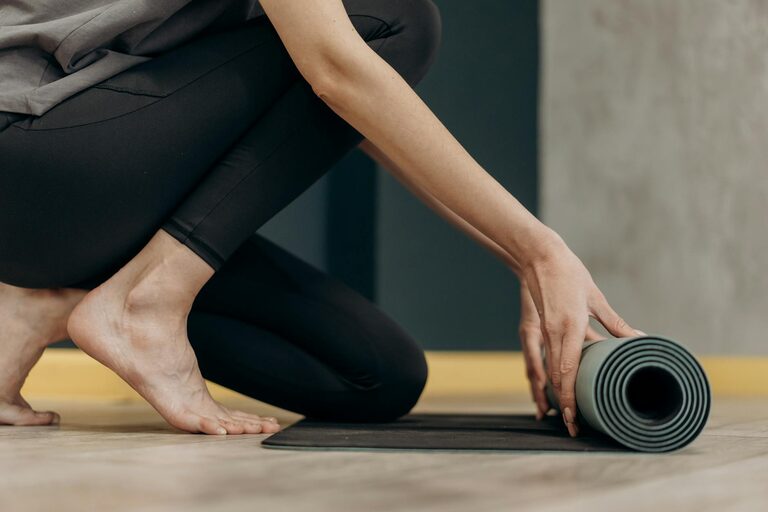Stretching is a simple yet powerful practice that offers numerous benefits, from enhancing flexibility and posture to reducing stress and preventing injuries. You don’t need a gym or special equipment to start stretching—your own home is the perfect place. This beginner’s guide will introduce you to the basics of stretching at home, with easy-to-follow routines and tips to make the most of your practice.
Why Stretching Matters
Stretching helps lengthen muscles and improve your range of motion. When muscles are tight, they can cause discomfort, reduce mobility, and increase risk of strains. Regular stretching:
– Enhances flexibility and joint health
– Relieves muscle tension and soreness
– Boosts circulation and energy levels
– Improves posture and balance
– Reduces stress and promotes relaxation
Starting a stretching routine doesn’t require much time—a few minutes daily can make a significant difference.
Preparing to Stretch at Home
Before you begin stretching, it’s helpful to keep a few basics in mind:
Create a Comfortable Space
Choose a quiet and uncluttered area with enough room to move freely. Use a yoga mat or soft carpet for comfort.
Wear Comfortable Clothing
Loose or stretchy clothes allow freedom of movement.
Warm Up Briefly
Stretching cold muscles can cause injury. Light cardio like marching in place or gentle arm swings for 3-5 minutes warms up your body.
Listen to Your Body
Stretch to the point of gentle tension, never pain. If a stretch feels uncomfortable, ease off or skip it.
Types of Stretching
Understanding the main types of stretches can help you design a balanced routine.
Static Stretching
This involves holding a stretch position for 15-60 seconds. It’s great for improving flexibility and is best done after exercise or as a relaxation tool.
Dynamic Stretching
Dynamic stretches use gentle, controlled movements through your range of motion (e.g., leg swings). They’re useful as a warm-up to prepare muscles for activity.
PNF Stretching (Proprioceptive Neuromuscular Facilitation)
An advanced technique involving stretching and contracting muscles. Recommended for experienced practitioners.
For beginners, static and dynamic stretching cover most needs.
Beginner-Friendly Stretching Routine
Here’s a simple routine to get you started at home. Aim to do it 3-5 times per week.
1. Neck Stretch
– Sit or stand tall.
– Slowly tilt your head to the right, bringing your ear toward your shoulder.
– Hold for 20 seconds. Repeat on the left side.
2. Shoulder Rolls
– Stand with arms relaxed.
– Roll your shoulders forward in a circular motion 10 times.
– Reverse the direction for 10 more rolls.
3. Chest Opener
– Interlace your fingers behind your back.
– Straighten your arms and gently lift your hands away from your back.
– Hold for 30 seconds while breathing deeply.
4. Seated Forward Bend
– Sit with legs extended.
– Slowly reach toward your toes, keeping your back straight.
– Hold for 30 seconds without forcing.
5. Cat-Cow Stretch (Spine Mobilization)
– Get on hands and knees.
– Inhale, arch your back (cow pose).
– Exhale, round your spine (cat pose).
– Repeat 10 times, flowing with your breath.
6. Hip Flexor Stretch
– Kneel on your right knee, left foot in front.
– Gently push hips forward.
– Hold for 30 seconds, then switch sides.
7. Standing Quadriceps Stretch
– Stand and hold a chair for balance if needed.
– Bend your right knee, bringing your foot toward your buttocks, and hold your ankle.
– Keep knees close. Hold for 30 seconds, then switch legs.
8. Calf Stretch
– Stand facing a wall.
– Place hands on the wall, step one foot back, keeping it flat on the floor.
– Lean forward to stretch the calf.
– Hold for 30 seconds, then switch sides.
Tips for Success
– Be consistent: Regular stretching yields the best results.
– Breathe deeply: Focus on slow, calm breaths during stretches to deepen relaxation.
– Progress gradually: Increase hold times and stretch depth as comfort grows.
– Stay hydrated: Drink water to keep muscles healthy.
– Combine with other activities: Walking, yoga, or light strength training complement stretching well.
When to Avoid Stretching
Avoid stretching if you have:
– Acute injury or inflammation
– Severe osteoporosis
– Joint instability or recent surgery
If you’re unsure, consult a healthcare professional before starting a new routine.
Conclusion
Stretching at home is an accessible and effective way to improve flexibility, reduce muscle tension, and enhance your overall wellness. This beginner’s guide provides a foundation to begin your practice safely and enjoy lasting benefits. Remember, the key is gentle, consistent movement and paying attention to your body’s signals. Start slow, stay patient, and soon you’ll notice a more limber and relaxed you.
Happy stretching!

